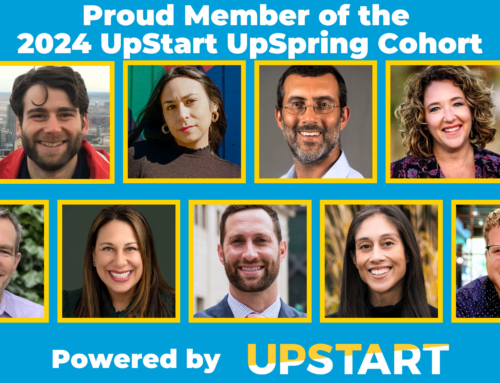Scaling growth, whether in nonprofits or social benefit enterprises, continues to generate attention and buzz. The underlying concepts behind scaling growth are not new. But scaling growth has gained further traction in recent years as the philanthropic and social investment sectors have increased their focus on improving and documenting organizational effectiveness, developed new collaborative funding models to address systemic problems, and supported individual donors interests in maximizing the impact of their charitable giving and social investments. Efforts like the Social Capital Markets conference (SOCAP), the Social Impact Exchange, the Social Innovation Fund, Investing in Innovation (i3), and Social Impact Bonds, all touch on or extend the parameters of the scaling growth dialogue.
An upcoming event (link) on scaling growth of nonprofits with William Foster, Bridgespan Group Senior Partner and incoming Executive Director of the Jacobson Family Foundation, continues this dialogue. Sponsored by UpStart Bay Area, the Foundation Center, and the Jewish Community Federation and Endowment Fund, this event will build on Fosters decade of primary research and client work. The discussions will focus on what nonprofits need to do in order to achieve scale, how their program models relate to their funding models, and philanthropy’s central role and common failings in helping nonprofits scale.
In leading up to the event, Foster was interviewed by Toby Rubin of UpStart. In the interview, Foster notes that scaling represents the nonprofit sectors shift to focusing on solving problems instead of simply doing good. Foster cites two factors driving scaling: a growing number of donors and nonprofit leaders entering the sector [after] having achieved major success in business, often at a relatively young age and that many high-tech entrepreneurs and financiers have applied the same ambitions for their philanthropy as they did for their business endeavors. (I think that second tension is certainly evident in the social investing sector.)
I find the conclusion equally fascinating and ripe with some risk.
To solve big problems requires a long time horizon and a deep commitment to patience. Some issues tobacco control or early childhood education still remain problems after years of philanthropic focus. Will philanthropists have the patience and align the ambition that built their business practices with the at-times glacial pace of change addressed through philanthropy and scaling nonprofits? By extension, will they also have the patience to wait out evaluation efforts (whether informal or formal) to assess the success of the scaling efforts to address big problems? My fear is that a lack of patience would shortcut significant efforts to address social challenges.
One area that I hope Foster does address more during the event relates to the challenge of pulling together the right level of funding needed to solve big problems. Solving big problems by scaling an enterprise as often discussed in forums such as SOCAP and the Social Impact Exchange requires pulling together a group of funders and donors to effectively scale an operation in size. This is especially true for organizations looking for mezzanine funding ($1M to $50M) and beyond. Again, will the new philanthropists and nonprofit leaders remain patient when looking for a return on such a large investment?
Scaling effectively is also predicated on an efficient marketplace that has the infrastructure and funding to supply the financial resources needed to scale organizations. Some efforts at creating marketplaces have emerged recently things like the Social Innovation Fund and Social Impact Bonds but a large-scale marketplace still appears to be missing. An efficient marketplace to scale growth also implies that financial resources align with the most effective nonprofits but Im not convinced that we as a field have designed effective metrics or systems to make those determinations yet.
A few other things to consider leading up to the event:
- The importance of collecting the right data and using it well to inform both donors and funders on an organizations effectiveness cannot be overstated. But, this emphasis on providing data and evidence of effectiveness should be balanced with a tendency to overburden organizations with data demands.
- Scaling has a broader definition that at times gets lost. It not only defines the growth of an organization, but can also mean its expansion to other communities or the adoption of implementation models by other organizations.
- There are also different stages at which to scale moving from early stage to mezzanine funding and scaling from that level which amounts to increasing funds beyond the $1M to $50M range. When discussion scaling, we need to be mindful of what level we are referencing.
- While scaling assumes that individual donors will also engage in supporting the organizations central to solving a big problem, recent research (such as the Money for Good study) found that while 85% of donors care about nonprofit performance only 3% would give based on the relative performance of that organizations. As the study concludes, only a very small number of donors actively donate to the highest performing nonprofits. That limitation will certainly challenge any organization looking to scale its growth.
The event should certainly be interesting and hopefully will address these issues and more.
This piece first appeared at the Adin Miller’s blog, Working in White Space.
Our purpose is to enable entrepreneurs to bring bold Jewish ideas to light. We help them reach Up to people in new ways that are meaningful, more inclusive, and create a brighter future for our Jewish community and the world we share.





